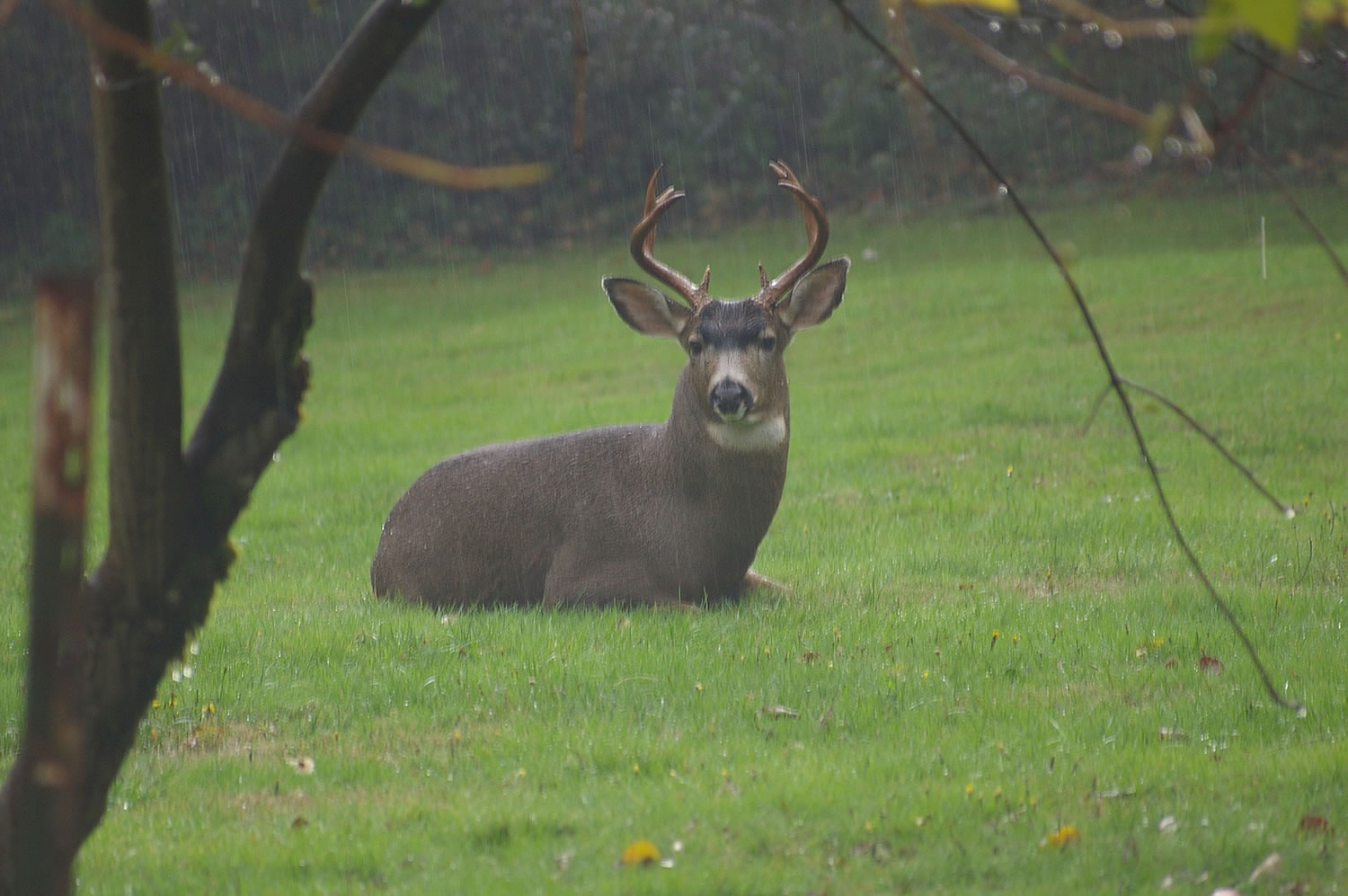WASHOUGAL — When Ray Croswell hunts for blacktail deer, he plans on being successful. At age 74, he’s killed more than 80 deer — including 55 blacktail — so his methods have passed the test of time.
And to oversimply a bit, his technique boils down to two tactics: scouting and sitting.
Croswell, of Washougal, is a former real estate salesman and former lands manager for the Washington Department of Fish and Wildlife. He now works intermittently as a consultant for the Rocky Mountain Elk Foundation.
Dates: Oct. 11-31 and Nov. 13-16 in most of Southwest Washington. Grayback unit No. 388 and East Klickitat No. 382 are open Oct. 11-24 with no late season. No late season in Wind River 574 and West Klickitat No. 578. Three-point antler minimum in Grayback, West Klickitat and West Klickitat.
Dates: Oct. 11-31 and Nov. 13-16 in most of Southwest Washington. Grayback unit No. 388 and East Klickitat No. 382 are open Oct. 11-24 with no late season. No late season in Wind River 574 and West Klickitat No. 578. Three-point antler minimum in Grayback, West Klickitat and West Klickitat.
Shooting hours: For opening weekend, 6:50 a.m. to 7 p.m. in Western Washington and 6:40 a.m. to 6:55 p.m. in Eastern Washington.
Hunter orange: Deer hunters must wear 400 square inches of fluorescent orange clothing above the waist. A cap or hat alone is not enough.
Shooting hours: For opening weekend, 6:50 a.m. to 7 p.m. in Western Washington and 6:40 a.m. to 6:55 p.m. in Eastern Washington.
Hunter orange: Deer hunters must wear 400 square inches of fluorescent orange clothing above the waist. A cap or hat alone is not enough.
But blacktail deer hunting always has been his passion. During his younger years, he hunted the elusive and mostly nocturnal deer in both Washington and Oregon. He watches their behavior year-round on property he owns east of Washougal.
Successful deer hunting in October and November begins with scouting during the other months of the years. He walks both past and potential future hunting locations looking for shed antlers, but primarily for “buck rub.”
Buck rub is where male deer make marks on trees. It is a visual and scent signpost that transmits some type of information to other bucks and does in the area.
“Buck rub is the No. 1 thing for me,” Croswell said about what he searches for when scouting.
Blacktail bucks will lick rubs, smell them and rub their glands on it.
“The majority of deer come up, look at rubs and smell them,” he said.
When he finds an area with sufficient buck rubs to his liking, Croswell then concentrates on learning the deer trails.
South-facing slopes that are steep, but with small, intermittent benches, often have deer bedding areas, he added.
Many deer hunters are simply too impatient, he said.
“My style is to plant my feet,” Croswell said. “I’m a lone hunter, a patient hunter. I like to sit in the mature timber-vine maple-ocean spray where there’s a lot of good groceries. I sit on a deer trail because I know eventually it’s going to work for me.”
Salmon anglers will spend days anchored in a hogline in the Columbia River waiting to catch a chinook. Deer hunters need the same patience.
”Plant your feet and sit tight,” he said.
And should you spook a deer, keep sitting.
“If you don’t run after them, most deer, especially bucks, will come back and look at you,” he said.
Croswell said the blacktail hunting in Southwest Washington has been good much of his life, but not any more. Less logging over the past few decades has reduced openings in the forest and made less food available for deer.
Predation by bears and cougars also is taking a big toll, he believes.
The best blacktail hunting has shifted for the state and federal forest lands to private timber holdings and the suburban-forest fringe.
“Urban areas provide protection for deer,” Croswell said. “It’s the only place deer can survive. They can handle dogs and cats. They can’t handle cougars. The cougars are moving into urban areas because the only place the deer are surviving well are urban areas.”
Yet it’s black bears that are even a harder predator on deer than cougars, he said.
“I think bears are the biggest problem on fawns,” Croswell said. “When they target in on fawns they get pretty efficient. Cougars are less of problem than bears by far.”
A sportsman looking for a suburban location to hunt deer might want to make friends with Christmas tree farmers, he said.
“A lot of Christmas tree farmers like hunters,” he said. “My neighbor loses 40 trees a year to buck rub. Talk to these guys and see if you can get on to their property.”



